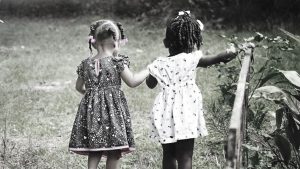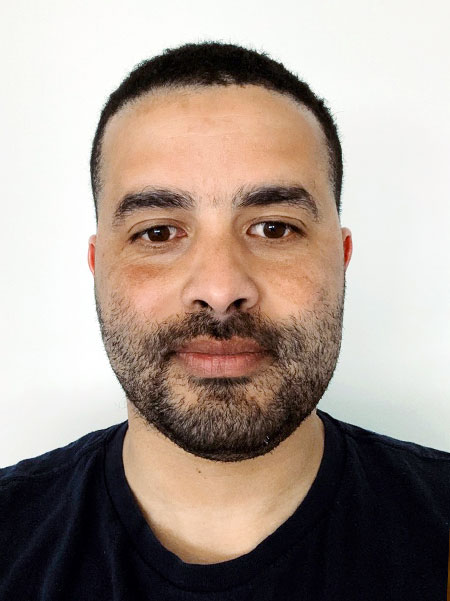
New Narratives: Reaching young people & families of colour affected by serious violence
Written Thought Piece by John Reece
John has been working on community projects with young people and families of colour affected by violence in London for over 10 years and is the Project Lead for ‘New Narratives’ which provides specialist therapy including EMDR in Open Door’s Rapid Response Service for young people and families experiencing trauma as a result of youth violence.
Identifying details of young people have been changed for the purpose of anonymity
Now in its 45th year, Open Door is a not-for-profit organisation based in Haringey, North London, UK, providing a range of therapeutic services for young people aged 12-24 and their families. It is community-based, working from shopfront premises in Crouch End and Tottenham, in secondary schools and online. In 2018, we received pilot funding from the Evening Standard Dispossessed Fund to work with young people affected by serious youth violence.
It was important first and foremost to get to know services already in the borough, understand their work and find ways of working together. I learnt about the work being done by the excellent and committed services of Project Futures, The Gateway, Bruce Grove Youth Space, Tottenham Hotspur’s Foundation, Oasis Youth Support at North Middlesex Hospital, the Outreach Team from the Integrated Gangs Unit and the trauma-informed approach of the Haringey Youth Justice Team. They have been instrumental in helping the project grow and have referred some young people for co-working. In our two-year pilot, 80% of the young people are male and 72% young people of colour– both considerably higher ratios than in our core service.
Before the onset of the Covid-19 pandemic, initial meetings with young people took place in their homes, the service they were referred by or any other transitional space before they felt ready to enter a clinical setting. We wanted to acknowledge to the young people that we understood they have had an experience of their safety and trust being attacked, their vulnerabilities exposed, and it would take time and careful attention to work effectively with such difficulties, and a way to communicate this we felt was to meet them where they felt safe. The approach is proactive and supportive where a clinician can expect sporadic attendances early on knowing that if consistency can be provided, real change can take place, perhaps more noticeable after a year.
This possibly explains why Covid was a challenging period for the service, phone sessions or even zoom made meaningful contact more difficult with newly referred young people and for some who were being seen before the lockdown, the relationship was maintained yet limited. We are pleased to be offering face to face sessions again and some young people tell us it wasn’t the same over the phone which is perhaps a recognition of how important the setting it is. The consistency of a safe private space at the same time on the same day is an important framework for the trust and relationship to develop, as is our ability to notice other forms of communication especially in the processing of difficult experiences.
We work with young people who have suffered from serious weapon-related injuries as well as siblings, parents and peers who have been affected. We work with both victims and perpetrators of violence. We have found that young perpetrators of violence have been exposed to violence much earlier on in life. I am always surprised at how quickly young people referred for an incidence of violence can relate the experience back to previous moments of vulnerabilities that are arguably more traumatic.
Feelings of helplessness, being out of control, shame or worthlessness come flooding back. Abandonment, witnessing domestic violence and parental mental health difficulties are common themes in the work and sometimes symptoms of later violence. This highlights the need for a public health approach to treat violence that offers broad preventatives measures that work in children’s centres as well as schools. For young perpetrators of violence, it is important to understand the episode of violence they suffered and to help them process it. It has also been essential to get in touch with the pervasive feelings of shame and humiliation, for this to be thought about together, to limit the natural urge to project the shame onto others.
To follow are three brief vignettes from our Tottenham site to attempt to capture the barriers to accessing mental health services for young people of colour, the trauma of racism and the impact of the transmission of violence.
Young People’s stories
Early in the pilot, I was struck by a story told to me by a teenager ‘Marcel’, of how daunting it felt to come to Open Door; he was the first person in his family to see a therapist. He told me about his experience, seeing an older neighbour he had known for many years being forcibly detained and sectioned. He also spoke of seeing his cousin suffer from the same fate after being abused as a child and then turning to cannabis every day to cope.
The higher detention rate of black people compared to white people for mental illness is well known (Black people are four times more likely to be detained https://www.ethnicity-facts-figures.service.gov.uk/health/mental-health/detentions-under-the-mental-health-act/latest). But perhaps what is not quite as widely acknowledged is the secondary trauma attached to this and the barriers this creates in communities. Marcel was highly anxious when he first came to Open Door, so I first tried to help him get used to the space and the setting by asking what he thought of it. He looked around the room (it’s a nice room with a high ceiling and is well decorated). He spent some time looking around and then at me and said, “You’ve done alright bruv!” We both laughed, and it helped bring down the emotional temperature. Later, he said that speaking to another person of colour helped with his early apprehensions.
Marcel was an ambitious young man and was keen to get back into employment, but anxiety was crippling him. He lives in a hotspot of serious youth violence but was not involved himself and would purposefully distance himself. One day he was walking home from work when a group of masked young men approached him and asked if he was from the area, before he had time to explain, he was stabbed three times and spent weeks in hospital. The stabbing is an example of violence as a disease; he lives in proximity to violence, increasing the likelihood of transmission.

Photo by Brad Neathery on Unsplash
During our sessions, Marcel told me that when he was in primary school, his mother was sent to prison, though he was told she was on holiday. He became anxious and would cling to his teachers for comfort the longer she was absent. He hadn’t thought about this for a long time and had buried the memories but perhaps the feelings of helplessness that surfaced during our work together brought it all back. Marcel ended therapy earlier than I would have liked; he got a job he wanted and found it too difficult to come after work. He called into the service a year later to say he was still in the same job and joked that he has been accepted by his colleagues as one of them, and we talked about how important that was to him to feel a sense of belonging.
A year into the project, I was referred a young person who had witnessed her sibling being shot. She suffered from flashbacks, panic attacks and depression. Although this was the reason for referral, it was not the sole focus of the work. During assessment, I learnt how ‘Alyssa’ grew up not being sure if she was loved as much as her other siblings, how she had seen her mother struggle with mental health difficulties and during secondary school Alyssa had suffered terribly from racism.
In a session three days after the killing of George Floyd, Alyssa started very quickly telling me about panic attacks she was having, violent flashbacks and an extremely uncomfortable feeling in her body. She told me she had watched the entire video of the killing despite how difficult it was; she felt she had to watch until the end even though she wanted to look away. She was overwhelmed by the experience and the impact this had on her. We thought together about this, the visual representation of oppression, racism and violence and how this put her right back in touch, in a bodily sense, with her own traumatic history. It was important for her to understand this was not irrational personalisation but the re-activation of the trauma of racism, a wound that fails to close.
Emmanuel was referred because he kept getting into fights at school. His mother was worried as he wouldn’t speak to her and he was withdrawn. He was bullied at school but being strong for his age, learnt to fight back and would tend to win, landing him in trouble and on the verge of exclusion. At 10, Emmanuel’s brother was brutally stabbed and almost died; he had to move out of the borough. Prior to this, Emmanuel and his brother had always shared a bedroom. After the stabbing, Emmanuel was not allowed to play outside, was constantly asked if he was ok but didn’t have the words to express his pain. He would later cry himself to sleep every night and lost confidence at school. When he came into the consulting room four years later, I immediately felt a heavy sadness that he carried with him but after the assessment, he said he wanted to work on his anger and not to be excluded from school. I said perhaps we should work on his sadness, too.

Photo by Eye for Ebony on Unsplash
So often I have seen that depression in young people exposed to violence is not identified by professionals, which makes it much more difficult for the young person to also recognize it in themselves. Emmanuel suffered from ‘survivors’ guilt’, a symptom of Post-Traumatic Stress Disorder. He felt it should have been him in the intensive care bed he would visit, not his brother. He blamed himself for the assault and wished he could have done more. The negative thoughts of responsibility led to depression and his sense of safety being shattered, which then triggered anxiety. After a year of therapy, the heavy sadness had been lifted and the anxiety was reduced but perhaps remained in some part to aid his need for vigilance.
The pilot project has secured further funding and has been re-named ‘New Narratives.’ We now have a small team of culturally competent psychotherapists and psychologists offering a range of treatments including psychodynamic psychotherapy and trauma-focused treatment including EMDR. Our hope is that post-pandemic we are able to expand our service, offering early intervention group work and partner with local schools and organisations in Haringey.
View more in-depth thinking from our guest bloggers on our Thought Pieces page.




